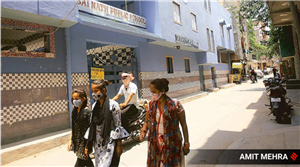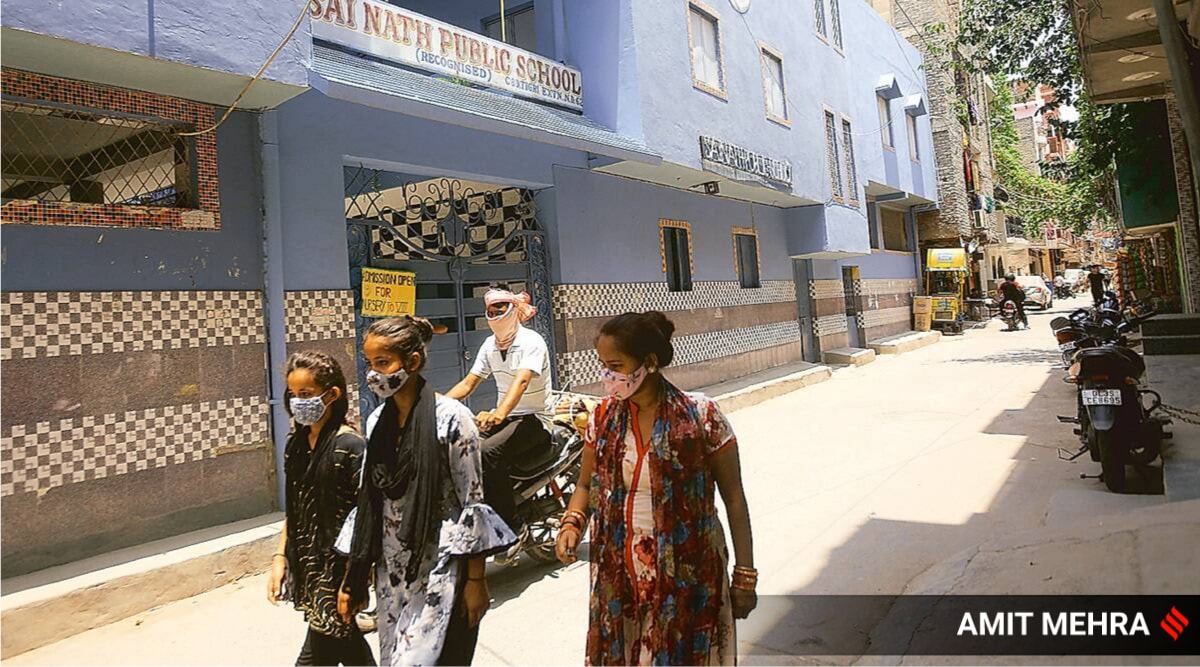As per a study, half of India’s school-going children attend pvt schools, 70% of them low-fee ones. With less than 10 applications for Class 1 this year, Sai Nath Public says Covid, govt neglect are killing them.
In the year-and-a-half since Covid pandemic hit, student strength at Sai Nath Public School in Delhi’s Tigri Colony has been in free fall. Now, this almost 25-year-old ‘budget school’ in an area of the Capital inhabited mostly by the migrant working class is reeling from a new low: three months into the start of admissions for this year, less than 10 students have enrolled in Class 1.
The parent body of the school, that is till Class 8, comprises daily wagers, small shop owners, cab drivers etc. Its story is the story of similar schools across the Capital, catering to a demography battered by Covid.
Sai Nath’s manager Rajesh Malhotra says even in normal times, most of the parents struggle to pay the fees ranging Rs 1,000-Rs 1,500 a month. “Every year some children drop out. But the way we have lost students since March 2020 is something else.”
With new admissions scanty, students of Class 8 moving on, and others that the school lost touch with during the pandemic, it has less than 200 students on its rolls now compared to around 350 last March.
The school has slashed salaries of junior teachers, to 70-80% of normal, let go of their bus driver and one of the caretaking staff. All upgrades, maintenance are at a halt.
While the Delhi High Court and Delhi government have now permitted schools to collect development charges of last year, Malhotra says it is of no help to schools like his. “We would be a fool to ask for these charges. We have waived our annual charge of Rs 2,000 this year too.”
A bitter Malhotra adds, “Policies on private schools are formulated keeping in mind elite schools and then applied in a blanket way, without accounting for the unique challenges of our smaller, low-cost schools.”
Schools like his have also been hit by the Delhi government’s decision to do away with the need for a transfer certificate from their previous school for students to shift to a government school. Deputy Chief Minister Manish Sisodia has said this is to ensure children who can’t pay fees don’t drop out.
“This is deeply insensitive,” says Malhotra. “It seems like the government is going all out to get these schools shut forever.” There are several government schools within a 2-km radius of Sai Nath School.
Kulbhushan Sharma, the president of the National Independent Schools’ Alliance (NISA), which represents 70,000 low-fees schools across the country, says that while data is hard to come by, “Across the board these schools are struggling… many which operated in rented buildings have shut shop.”
A survey by NISA last September of 3,690 budget schools across the country found fee collection across schools 25% below normal.
On what they consider budget schools, Sharma says, “Any school that charges less fees than the government’s expenditure per child in their schools.”
A study by the Central Square Foundation, a non-profit organisation in the education sector, last year showed that half of India’s school-going children are enrolled in private schools, of whom 45.5% are in schools with fees less than Rs 500. As many as 70% paid less than Rs 1,000 a month.
Malhotra, who joined Sai Nath School, where his father worked as chairman, 10 years ago, doesn’t expect things to improve any time soon. Fees collection remains a persistent problem, despite the school waiving charges last June, and for one month this year.
Should the school shut, it will be huge loss for parents like Ruby, whose three children are enrolled there, including two under EWS. Her hopes rest on Dolly, her daughter in Class 6 for whom the parents rustle together Rs 1,400 as fees. Ruby’s husband, a driver, did not get any work for four months last year, but they ensured Dolly didn’t suffer, she says.
“Dolly is a good student and we didn’t want to separate her from her friends. So I somehow put together her fees, paying half in the middle of the month and half at the end, once the household expenses were met.”
Source: Read Full Article


